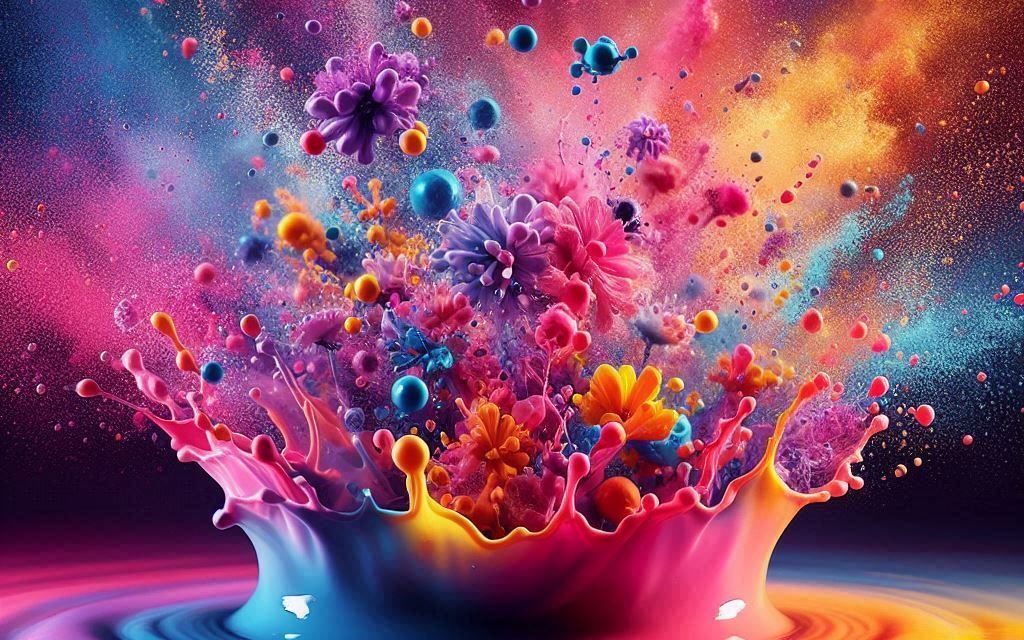Table of Contents
Why is Monochrome Art So Impressive? The Psychological Impact of Shades and Colors
Monochrome art, characterized by the use of a single color or varying shades of one color, has held a unique place in the art world for centuries. From ancient cave paintings to modern minimalism, monochrome works captivate audiences with their simplicity and depth. But what makes monochrome art so impressive? The answer lies not only in its aesthetic appeal but also in the psychological impact that colors and their shades have on the human mind.

The Power of Simplicity: Less is More
Monochrome art stands out in its ability to convey complex emotions and ideas through simplicity. By limiting the color palette, artists focus on form, texture, and composition. This restriction often results in a more profound connection between the viewer and the artwork. The absence of multiple colors reduces visual noise, allowing the viewer to immerse themselves in the subtleties of the piece. This minimalism invites contemplation, making the art more personal and evocative.
Psychological Impact of Monochrome Art
The psychological effects of monochrome art are deeply rooted in our perception of color. Colors have long been known to evoke specific emotions and moods. For instance, blue is often associated with calmness and tranquility, while red can evoke feelings of passion or aggression. In monochrome art, the use of varying shades of a single color can create a powerful emotional resonance. The subtle differences in tone and hue can evoke a range of feelings, from melancholy and introspection to serenity and purity.
1. The Role of Contrast and Gradation
One of the most striking aspects of monochrome art is its reliance on contrast and gradation. The interplay between light and dark shades within a single color spectrum can create a dramatic effect. High contrast between light and dark areas draws attention and creates a sense of depth and movement. Gradation, or the gradual transition from one shade to another, can evoke feelings of harmony and balance. This dynamic interaction between shades engages the viewer’s eye, making the artwork compelling and thought-provoking.
2. Monochrome and Focused Perception
Monochrome art also encourages focused perception. With fewer colors competing for attention, viewers are more likely to notice details they might otherwise overlook. This can lead to a deeper appreciation of the artwork’s structure, texture, and the artist’s technique. The limited palette also challenges the artist to express their vision with precision and creativity, often leading to innovative approaches and unique compositions.
3. Color Psychology: The Impact of Specific Hues
The psychological impact of monochrome art can vary depending on the color used. For example:
- Black and White: Black and white monochrome art is perhaps the most iconic. The stark contrast between these two shades can symbolize duality, conflict, or balance. Black often represents mystery, power, or elegance, while white can evoke purity, simplicity, or emptiness. Together, they create a timeless, sophisticated aesthetic that can be both dramatic and serene.
- Blue Monochrome: Shades of blue in monochrome art can evoke feelings of calmness, introspection, and depth. Blue is often associated with the sky and the sea, symbolizing vastness and tranquility. Artists may use blue to create a sense of peace, stability, or melancholy.
- Red Monochrome: Red is a color that evokes strong emotions such as passion, love, or anger. Monochrome art in red can be intense and energetic, drawing the viewer’s attention and evoking a visceral response. The varying shades of red can range from the softness of pink to the intensity of crimson, each bringing a different emotional layer to the artwork.
- Green Monochrome: Green is often associated with nature, growth, and renewal. Monochrome art in green can evoke feelings of serenity, balance, and freshness. The color’s connection to the natural world can also bring a sense of grounding and harmony to the viewer.
Monochrome in Modern Art: A Testament to Timelessness
In the modern art world, monochrome continues to be a powerful tool for artists. The minimalist movement, for example, often employs monochrome techniques to strip art down to its essential elements. This approach challenges viewers to engage with the art on a deeper level, focusing on the emotional and intellectual impact rather than just the visual. Artists like Yves Klein, who famously used a single shade of blue (now known as “International Klein Blue”), have demonstrated the profound effect that a single color can have on the viewer’s experience.
Conclusion: The Lasting Appeal of Monochrome Art
Monochrome art impresses because it speaks to the core of human perception and emotion. Its simplicity allows for a more focused and intimate connection with the artwork, while the psychological impact of color and shade creates a rich, emotional experience. In a world often overwhelmed by sensory input, monochrome art offers a refreshing, contemplative space where less truly becomes more. Whether it’s the stark contrast of black and white or the soothing tones of a single color, monochrome art continues to captivate and inspire, proving that sometimes, the most powerful expressions are those made with the fewest elements.


No responses yet